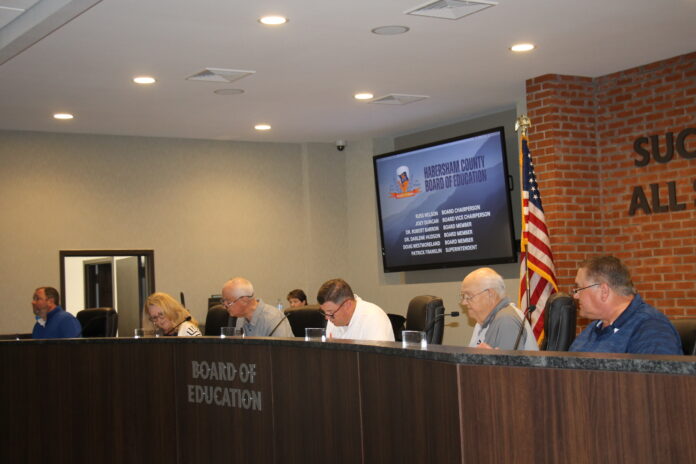
At its regular meeting on Monday, May 12, the Habersham County Board of Education unanimously approved a proposed 2026 budget for all funds, setting the stage for its likely adoption next month.
The board agreed to move forward with the legal advertisement of the budget, a procedural step required before a final vote, which is scheduled for June 16.
Two public hearings were held prior to Monday’s meeting – one in April and a second in May. Preliminary budget figures were not available during the April session, limiting public insight until the May hearing when the numbers were disclosed.
Despite timing of disclosure of the figures, Chairman Russ Nelson dismissed the notion of a third public hearing to allow further community input.
“We did what was required,” Nelson said. “We just follow the guidance of our financial officer and do what’s required by law.”
State law mandates only two public hearings, and as indicated by Nelson, board members won’t extend the process further before final adoption.
Proposed budget
In May, the Habersham County School District unveiled its proposed $137 million budget for the 2026 fiscal year, marking a nearly 9% increase over the previous year. Despite the significant changes, no public comments were made during the May 5 hearing.
The budget anticipates an $8 million shortfall, with revenues projected at $129 million. The general fund, which primarily supports salaries and instruction, faces a $2.1 million deficit. Chief Financial Officer Staci Newsome said money from the fund balance will be used to cover the total $8 million gap.
Discussions on the millage rate and potential tax rates won’t be held until later this summer.
The general fund makes up $104 million of the budget, with 87% allocated to the district’s 1,187 employees and instruction for over 7,000 students. Other budget components—debt service, capital projects, special revenue and school nutrition—are restricted to specific uses.
Rising health insurance costs, particularly for classified staff who receive no state assistance, are a major driver of the budget increase. Board members emphasized that much of the budget is beyond their control, with only about 30% being discretionary.
State funding through the QBE formula is expected to rise modestly from $62 million to $63.7 million due to increased enrollment.






